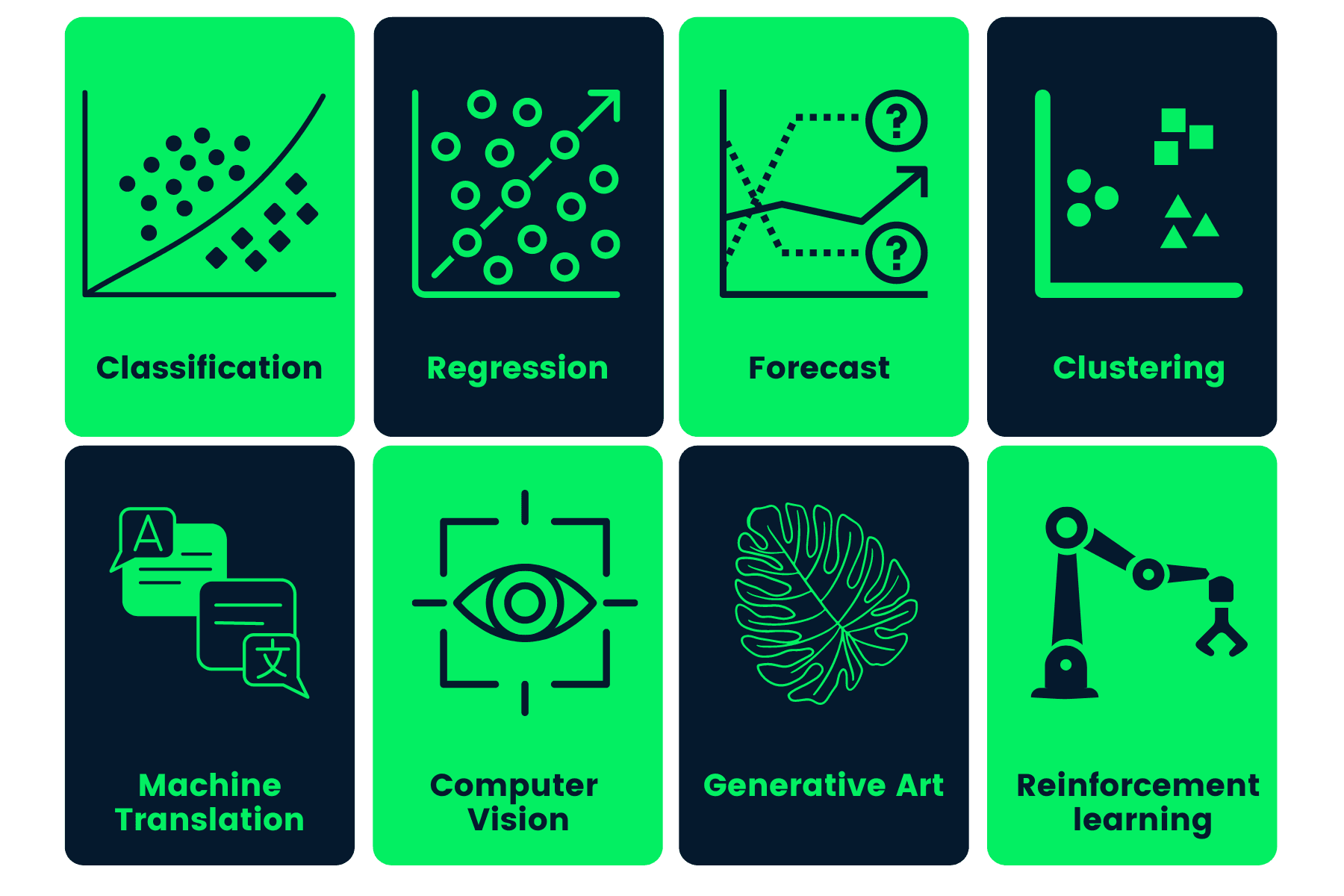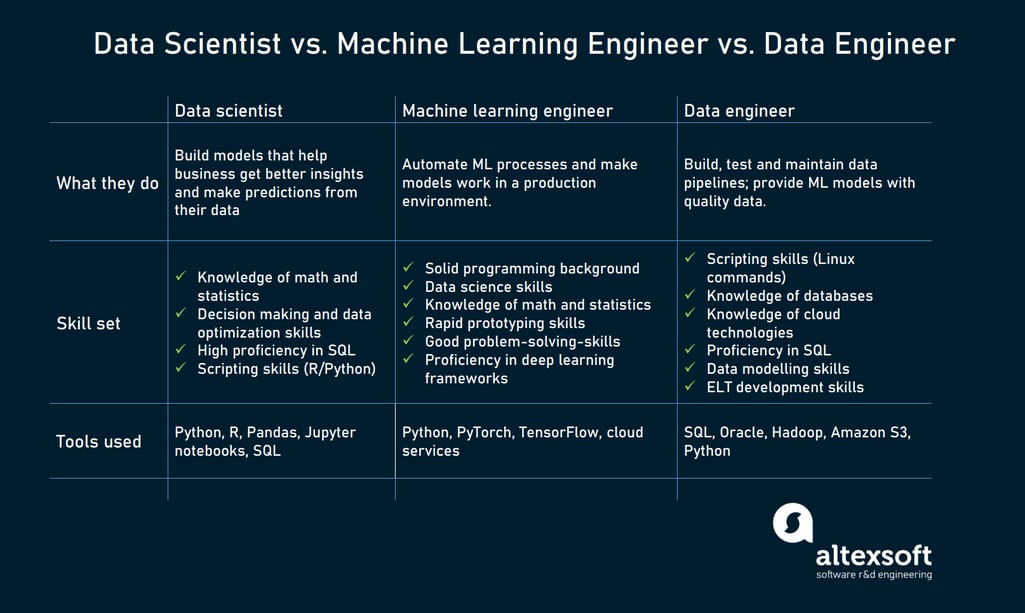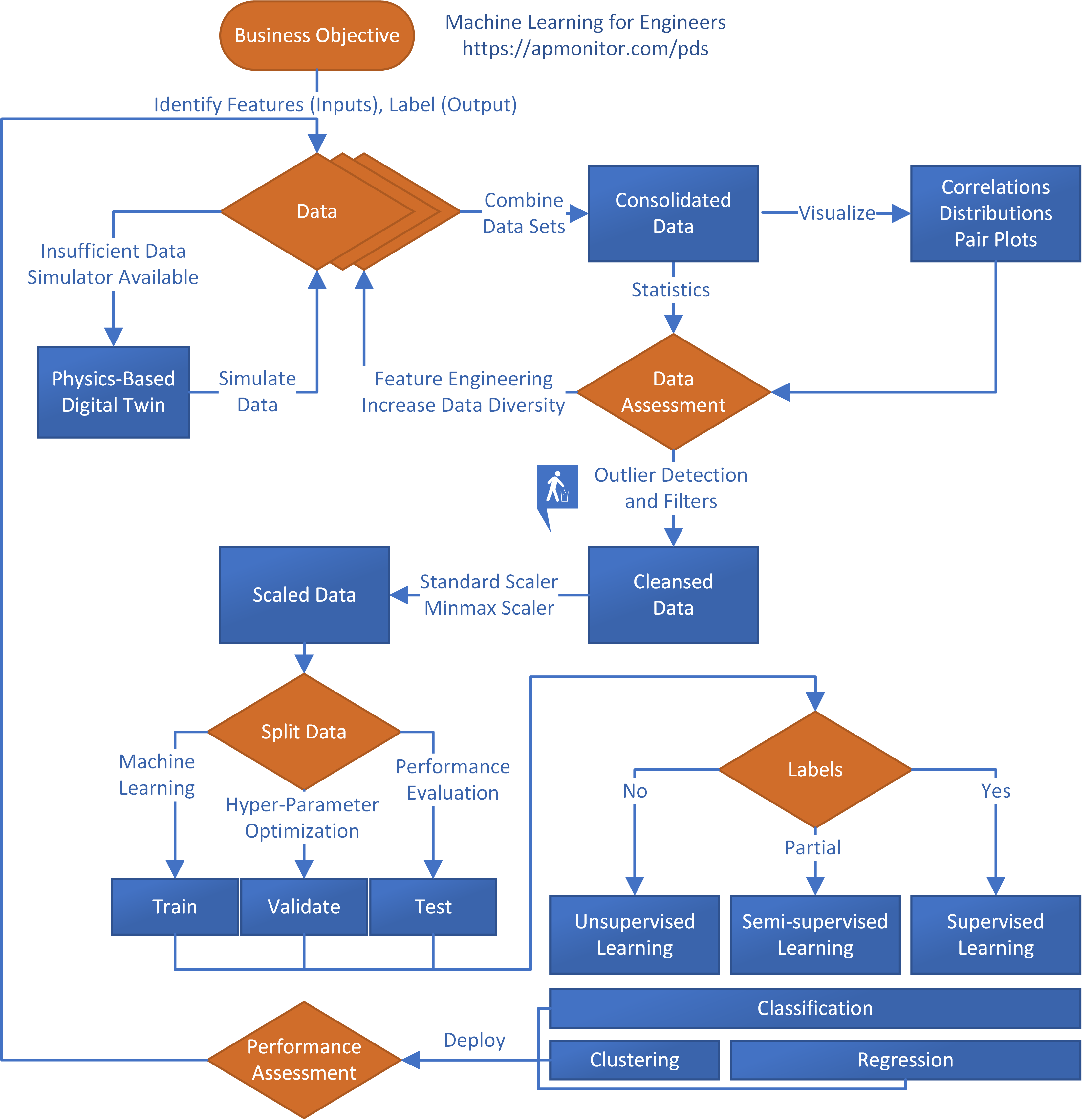All Categories
Featured
Table of Contents
- – The Main Principles Of What Does A Machine Lea...
- – 3 Simple Techniques For Software Engineering V...
- – The Main Principles Of Machine Learning Engin...
- – All about Machine Learning/ai Engineer
- – Fascination About How Long Does It Take To L...
- – The 9-Second Trick For 19 Machine Learning B...
- – The smart Trick of How Long Does It Take To ...
Some people assume that that's cheating. If somebody else did it, I'm going to use what that individual did. I'm compeling myself to think through the feasible options.
Dig a bit deeper in the mathematics at the start, just so I can construct that foundation. Santiago: Ultimately, lesson number seven. This is a quote. It says "You have to understand every detail of an algorithm if you wish to utilize it." And after that I state, "I assume this is bullshit recommendations." I do not believe that you have to comprehend the nuts and screws of every formula before you use it.
I have actually been using neural networks for the lengthiest time. I do have a feeling of exactly how the slope descent functions. I can not discuss it to you now. I would need to go and check back to actually get a better instinct. That does not mean that I can not resolve points utilizing neural networks, right? (29:05) Santiago: Trying to force individuals to think "Well, you're not going to be successful unless you can discuss each and every single information of just how this works." It returns to our arranging example I believe that's simply bullshit recommendations.
As a designer, I've worked with many, lots of systems and I've utilized lots of, many things that I do not understand the nuts and screws of just how it functions, despite the fact that I understand the influence that they have. That's the final lesson on that particular string. Alexey: The funny point is when I believe about all these libraries like Scikit-Learn the algorithms they make use of inside to implement, as an example, logistic regression or another thing, are not the like the formulas we study in artificial intelligence classes.
The Main Principles Of What Does A Machine Learning Engineer Do?
So even if we attempted to learn to get all these basics of artificial intelligence, at the end, the algorithms that these collections make use of are different. Right? (30:22) Santiago: Yeah, absolutely. I believe we need a great deal much more materialism in the sector. Make a lot more of an effect. Or focusing on providing worth and a bit much less of purism.

Incidentally, there are 2 various courses. I normally speak to those that want to operate in the market that wish to have their effect there. There is a course for researchers and that is completely various. I do not risk to mention that due to the fact that I don't understand.
However right there outside, in the market, materialism goes a long method for certain. (32:13) Alexey: We had a remark that stated "Feels even more like inspirational speech than speaking about transitioning." So perhaps we must change. (32:40) Santiago: There you go, yeah. (32:48) Alexey: It is a good motivational speech.
3 Simple Techniques For Software Engineering Vs Machine Learning (Updated For ...
One of the things I desired to ask you. First, allow's cover a pair of things. Alexey: Let's begin with core devices and frameworks that you require to discover to in fact change.
I recognize Java. I know exactly how to utilize Git. Possibly I understand Docker.
What are the core tools and frameworks that I need to discover to do this? (33:10) Santiago: Yeah, definitely. Fantastic question. I think, primary, you should begin finding out a little of Python. Since you already understand Java, I don't assume it's going to be a substantial change for you.
Not due to the fact that Python coincides as Java, however in a week, you're gon na get a whole lot of the differences there. You're gon na have the ability to make some development. That's primary. (33:47) Santiago: After that you get particular core tools that are mosting likely to be used throughout your entire profession.
The Main Principles Of Machine Learning Engineer Learning Path
That's a library on Pandas for information control. And Matplotlib and Seaborn and Plotly. Those 3, or among those three, for charting and displaying graphics. You obtain SciKit Learn for the collection of equipment understanding formulas. Those are tools that you're mosting likely to have to be utilizing. I do not suggest simply going and discovering them out of the blue.
Take one of those courses that are going to start introducing you to some issues and to some core ideas of equipment discovering. I don't keep in mind the name, yet if you go to Kaggle, they have tutorials there for free.
What's good regarding it is that the only demand for you is to recognize Python. They're mosting likely to present an issue and inform you how to use decision trees to resolve that particular issue. I believe that process is incredibly effective, because you go from no equipment learning history, to understanding what the issue is and why you can not fix it with what you know right currently, which is straight software application engineering methods.
All about Machine Learning/ai Engineer
On the other hand, ML engineers specialize in building and releasing machine knowing models. They concentrate on training models with information to make predictions or automate tasks. While there is overlap, AI engineers take care of even more diverse AI applications, while ML engineers have a narrower concentrate on equipment learning algorithms and their sensible execution.

Maker knowing designers concentrate on creating and deploying artificial intelligence versions into production systems. They service design, making sure designs are scalable, effective, and incorporated into applications. On the other hand, data scientists have a broader function that consists of information collection, cleaning, exploration, and structure models. They are commonly in charge of extracting insights and making data-driven decisions.
As companies increasingly take on AI and maker discovering innovations, the demand for proficient experts expands. Maker understanding engineers work on sophisticated tasks, add to development, and have affordable wages.
ML is basically different from conventional software program advancement as it concentrates on teaching computers to pick up from information, instead of programs specific policies that are implemented systematically. Uncertainty of outcomes: You are most likely made use of to creating code with foreseeable outcomes, whether your feature runs as soon as or a thousand times. In ML, nevertheless, the results are less specific.

Pre-training and fine-tuning: How these versions are trained on substantial datasets and after that fine-tuned for certain tasks. Applications of LLMs: Such as text generation, view evaluation and info search and access. Papers like "Attention is All You Need" by Vaswani et al., which introduced transformers. On-line tutorials and courses concentrating on NLP and transformers, such as the Hugging Face training course on transformers.
Fascination About How Long Does It Take To Learn “Machine Learning” From A ...
The ability to handle codebases, combine modifications, and fix conflicts is equally as crucial in ML growth as it is in standard software program jobs. The abilities established in debugging and screening software applications are extremely transferable. While the context might alter from debugging application reasoning to determining concerns in information handling or version training the underlying concepts of organized examination, theory testing, and repetitive improvement coincide.
Equipment learning, at its core, is greatly reliant on statistics and probability theory. These are crucial for recognizing exactly how formulas pick up from information, make forecasts, and review their performance. You need to take into consideration ending up being comfortable with concepts like analytical value, distributions, hypothesis testing, and Bayesian reasoning in order to style and translate versions properly.
For those thinking about LLMs, an extensive understanding of deep knowing designs is beneficial. This includes not only the auto mechanics of semantic networks but also the style of certain designs for different use instances, like CNNs (Convolutional Neural Networks) for image handling and RNNs (Recurring Neural Networks) and transformers for sequential information and all-natural language processing.
You need to recognize these problems and learn strategies for identifying, reducing, and connecting about predisposition in ML versions. This includes the possible influence of automated choices and the moral implications. Many versions, especially LLMs, need considerable computational sources that are frequently provided by cloud platforms like AWS, Google Cloud, and Azure.
Building these skills will certainly not just promote a successful change into ML but likewise make certain that developers can add efficiently and sensibly to the advancement of this dynamic area. Concept is essential, but absolutely nothing defeats hands-on experience. Beginning dealing with jobs that allow you to apply what you've learned in a useful context.
Join competitions: Join platforms like Kaggle to join NLP competitions. Construct your projects: Begin with basic applications, such as a chatbot or a text summarization device, and gradually raise intricacy. The field of ML and LLMs is rapidly developing, with new breakthroughs and modern technologies arising routinely. Staying upgraded with the most recent research and trends is important.
The 9-Second Trick For 19 Machine Learning Bootcamps & Classes To Know
Contribute to open-source projects or create blog site articles regarding your discovering journey and tasks. As you obtain competence, begin looking for opportunities to integrate ML and LLMs right into your job, or look for brand-new duties focused on these modern technologies.

Prospective use cases in interactive software program, such as suggestion systems and automated decision-making. Understanding uncertainty, standard analytical measures, and probability distributions. Vectors, matrices, and their function in ML formulas. Mistake reduction strategies and slope descent discussed simply. Terms like version, dataset, attributes, labels, training, reasoning, and validation. Data collection, preprocessing techniques, design training, analysis processes, and implementation factors to consider.
Choice Trees and Random Forests: Instinctive and interpretable versions. Matching trouble kinds with appropriate versions. Feedforward Networks, Convolutional Neural Networks (CNNs), Reoccurring Neural Networks (RNNs).
Constant Integration/Continuous Deployment (CI/CD) for ML process. Version tracking, versioning, and efficiency monitoring. Detecting and resolving adjustments in version performance over time.
The smart Trick of How Long Does It Take To Learn “Machine Learning” From A ... That Nobody is Talking About

You'll be introduced to 3 of the most appropriate parts of the AI/ML technique; monitored knowing, neural networks, and deep knowing. You'll realize the distinctions in between traditional shows and maker learning by hands-on advancement in supervised understanding prior to developing out intricate dispersed applications with neural networks.
This course works as a guide to machine lear ... Program A lot more.
Table of Contents
- – The Main Principles Of What Does A Machine Lea...
- – 3 Simple Techniques For Software Engineering V...
- – The Main Principles Of Machine Learning Engin...
- – All about Machine Learning/ai Engineer
- – Fascination About How Long Does It Take To L...
- – The 9-Second Trick For 19 Machine Learning B...
- – The smart Trick of How Long Does It Take To ...
Latest Posts
The Best Courses For Machine Learning Interview Preparation
How To Crack The Machine Learning Engineer Interview
How To Pass The Interview For Software Engineering Roles – Step-by-step Guide
More
Latest Posts
The Best Courses For Machine Learning Interview Preparation
How To Crack The Machine Learning Engineer Interview
How To Pass The Interview For Software Engineering Roles – Step-by-step Guide